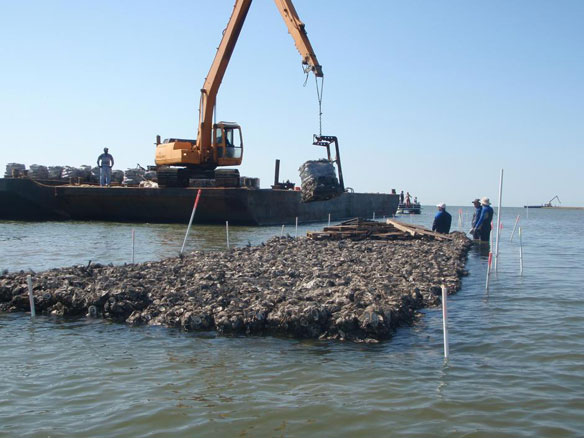
A submerged breakwater reef was created along two stretches of shoreline, protecting more than 18 acres of habitat for submerged aquatic vegetation and creating almost two acres of oyster reef. When all is said and done, the submerged reefs will protect more than a mile of coastal habitat by reflecting erosive wave energy away from the shoreline, unlike traditional erosion protection structures that contribute to habitat loss. Oyster Restoration, in Alabama. Captions and Photo source: NOAA Fisheries
Excerpts;
“I wish I had some oysters.
I’m not talking about oysters to eat … I’m talking about the oysters that once protected New Yorkers from storm surges, a bivalve population that numbered in the trillions and that played a critical role in stabilizing the shoreline from Washington to Boston.
Just as corals protect tropical islands, these oyster beds created undulation and contour on the harbor bottom that broke up wave action before it could pound the shore with its full force. Beds closer to shore clarified the water through their assiduous filtration (a single oyster can filter as much as 50 gallons of water a day); this allowed marsh grasses to grow, which in turn held the shores together with their extensive root structure.
But 400 years of poor behavior on the part of humans have ruined all that…
Read Full Article, The New York Times









